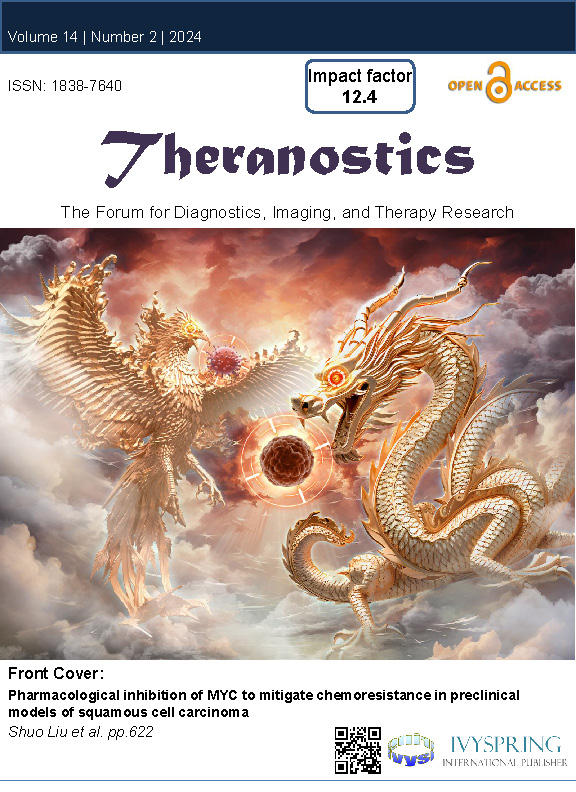清除衰老细胞可促进 2 型糖尿病小鼠皮肤伤口愈合
IF 12.4
1区 医学
Q1 MEDICINE, RESEARCH & EXPERIMENTAL
引用次数: 0
摘要
背景:糖尿病足溃疡(DFU)的发病率、复发率、致残率和死亡率都很高,给医疗保健带来了巨大挑战。目前的糖尿病足溃疡治疗方法仍然存在多种局限性。衰老细胞(SnCs)被发现对急性伤口愈合有好处,但它们在慢性伤口(如 DFU)中的作用仍不清楚:我们收集了临床 DFU 和下肢骨折患者的皮肤、脂肪和肌肉样本。对这些样本进行的 RNA 序列分析和 qPCR 分析表明,SnCs 在 DFU 处显著积累,这体现在较高的衰老标记物(如 p16 和 p21)和衰老相关分泌表型(SASP)上。我们用高脂饮食(Db-HFD)喂养的 2 型糖尿病小鼠(db/db)构建了一个模型,用 6 毫米的打孔器打伤小鼠的背部皮肤。高脂饮食对野生型(WT)小鼠的伤口愈合有轻微影响,但高糖会明显延迟 Db-HFD 小鼠的伤口愈合。我们给小鼠注射了之前开发的荧光探针(XZ1208),该探针可在体内检测SnCs,并在Db-HFD小鼠的伤口处观察到了强烈的衰老信号。与 SnCs 在急性伤口愈合中的有益作用相反,我们的研究结果表明,使用衰老分解化合物 ABT263 清除 SnCs 会显著加速 Db-HFD 小鼠的伤口愈合:总之,这些研究结果表明,SnCs 严重积聚在伤口部位,延迟了 DFU 的愈合过程。因此,以SnCs为靶点的衰老分解疗法是治疗DFU的一种很有前景的方法,有可能改善DFU患者的生活质量。本文章由计算机程序翻译,如有差异,请以英文原文为准。
Clearance of senescent cells enhances skin wound healing in type 2 diabetic mice
Background: Diabetic foot ulcers (DFUs) pose a substantial healthcare challenge due to their high rates of morbidity, recurrence, disability, and mortality. Current DFU therapeutics continue to grapple with multiple limitations. Senescent cells (SnCs) have been found to have a beneficial effect on acute wound healing, however, their roles in chronic wounds, such as DFU, remain unclear./nMethods and results: We collected skin, fat, and muscle samples from clinical patients with DFU and lower limb fractures. RNA-sequencing combined with qPCR analyses on these samples demonstrate a significant accumulation of SnCs at DFU, as indicated by higher senescence markers (e.g., p16 and p21) and a senescence-associated secretory phenotype (SASP). We constructed a type 2 diabetic model of db/db mice, fed with a high-fat diet (Db-HFD), which were wounded using a 6 mm punch to the dorsal skin. HFD slightly affected wound healing in wild-type (WT) mice, but high glucose significantly delayed wound healing in the Db-HFD mice. We injected the mice with a previously developed fluorescent probe (XZ1208), which allows the detection of SnCs in vivo, and observed a strong senescence signal at the wound site of the Db-HFD mice. Contrary to the beneficial effects of SnCs in acute wound healing, our results demonstrated that clearance of SnCs using the senolytic compound ABT263 significantly accelerated wound healing in Db-HFD mice./nConclusion: Collectively, these findings suggest that SnCs critically accumulate at wound sites, delaying the healing process in DFUs. Thus, targeting SnCs with senolytic therapy represents a promising approach for DFU treatment, potentially improving the quality of life for patients with DFUs.
求助全文
通过发布文献求助,成功后即可免费获取论文全文。
去求助
来源期刊

Theranostics
MEDICINE, RESEARCH & EXPERIMENTAL-
CiteScore
25.40
自引率
1.60%
发文量
433
审稿时长
1 months
期刊介绍:
Theranostics serves as a pivotal platform for the exchange of clinical and scientific insights within the diagnostic and therapeutic molecular and nanomedicine community, along with allied professions engaged in integrating molecular imaging and therapy. As a multidisciplinary journal, Theranostics showcases innovative research articles spanning fields such as in vitro diagnostics and prognostics, in vivo molecular imaging, molecular therapeutics, image-guided therapy, biosensor technology, nanobiosensors, bioelectronics, system biology, translational medicine, point-of-care applications, and personalized medicine. Encouraging a broad spectrum of biomedical research with potential theranostic applications, the journal rigorously peer-reviews primary research, alongside publishing reviews, news, and commentary that aim to bridge the gap between the laboratory, clinic, and biotechnology industries.
 求助内容:
求助内容: 应助结果提醒方式:
应助结果提醒方式:


